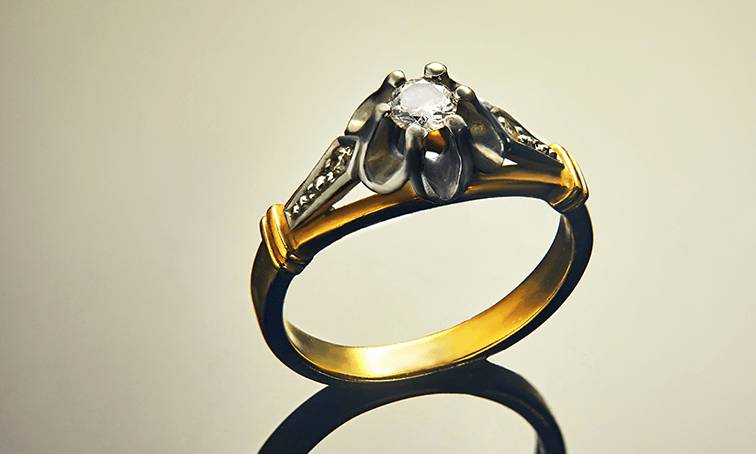Congratulations! Your significant other popped the question and of course, you said yes.
Your ring obviously holds a lot of sentimental value. But rings and jewelry are small, fragile, and their incredible high monetary value fits right into a thief’s pocket. How will you protect your precious gift from these elements?
You might want to consider jewelry insurance. From coverage to cost, like most insurance policies, there is a lot to consider when weighing your jewelry insurance options.
Check your homeowner or renter’s policy
If you are seriously considering jewelry insurance, first check your homeowner’s policy. Jewelry is covered under personal property coverage, but this can range greatly based on your specific policy.
For instance, if your homeowner’s insurance covers $5,000 in personal property and a thief breaks into your house, stealing your TV, jewelry and two laptops, you’re not fully covered. Don’t compromise your personal belongings when jewelry coverage would fix this burden.
What about my warranty?
Warranties are not insurance policies. They provide limited coverage and have expiration dates. Jewelry insurance, on the other hand, continues as long as you pay and you can choose the coverage you want.
Get an appraisal
After you decide jewelry insurance is right for you, your next step is to get an appraisal by a professional and reputable jewelry appraiser. This may cost a few dollars, but you can rest assured knowing your insurance policy is accurate.
Your appraiser will take some pictures of your piece. If not, you should definitely keep some pictures on hand. We’ll explain why in a little bit.
Consider your coverage options
Contact MIAA, and we’ll help you find the right insurer for your needs. When you meet with an agent, now’s the time to ask the following questions:
How much will I pay? What Coverage should I get?
The price of your insurance is based on your coverage, but expect to pay 1 to 2 percent of your jewelry’s value. If your ring is valued at $5,000, expect to pay around $50 a year. Your coverage options will vary from accidental loss, damage and theft. With the relatively low cost of jewelry insurance, so you may consider spending a few extra dollars a year for full coverage.
Blanket or scheduled?
A blanket policy will cover multiple pieces, while a scheduled policy covers individual pieces. Which you choose will depend on your specific needs. If you have a valuable collection or even a few pieces of sentimental value, consider a blanket policy. If you just want to protect your wedding ring or a beloved family piece, considered a scheduled policy.
Replacement or reimbursement?
This might be one of your most important decisions. Some policies replace your piece by paying a jeweler to replicate it while others reimburse you and have you meet with the jeweler yourself. This is where any picture you have of the stolen or lost piece comes in handy. With the pictures, jewelers will know exactly what your piece looked like and help them accurately replicate it.
Other replacement policies simply replace your ring with one of a different value. Strongly consider which policy you favor here.
Other tips and pointers.
Obviously, preventing this situation from happening in the first place is always the best option. You don’t want to deal with this headache and insurers don’t want to see you upset. Consider the following tips to keep your jewelry safe.
When traveling, only bring jewelry you’re going to wear and keep close tabs on it. Bringing unnecessary jewelry only increases your chances of losing it. Also remember to never place jewelry in luggage while being transported by an airline, cruise line, etc., as luggage is frequently lost. Most jewelry is relatively small, just bring it on your carry on or wear it. Consider investing in a safety deposit box to store your jewelry and other important documents. In fact, this might help lower your jewelry insurance as well.
At the end of the day, insure jewelry that is “valuable” to you. Whether it be monetary or sentimental value, it’s your insurance. Any jewelry can be replaced or repaired with the right insurance.
